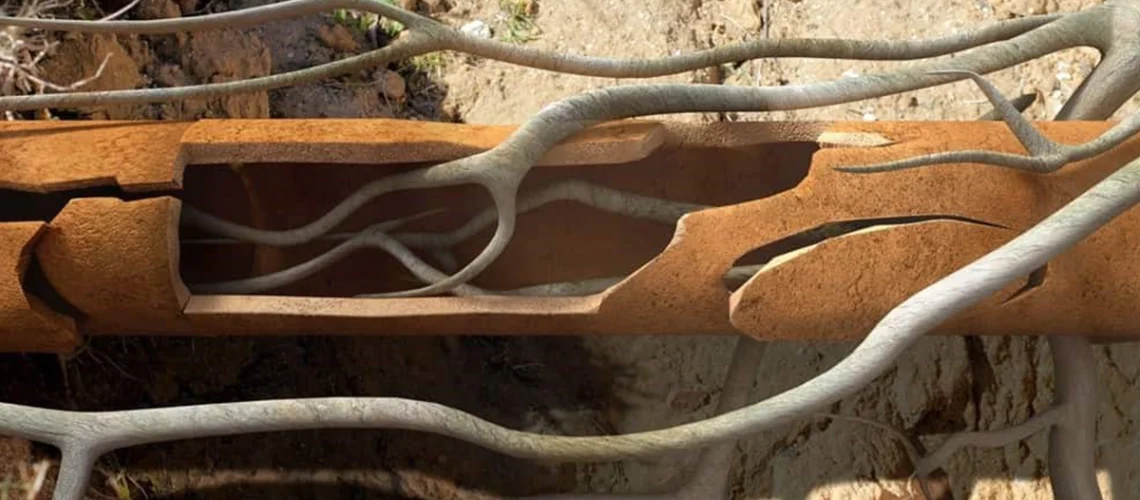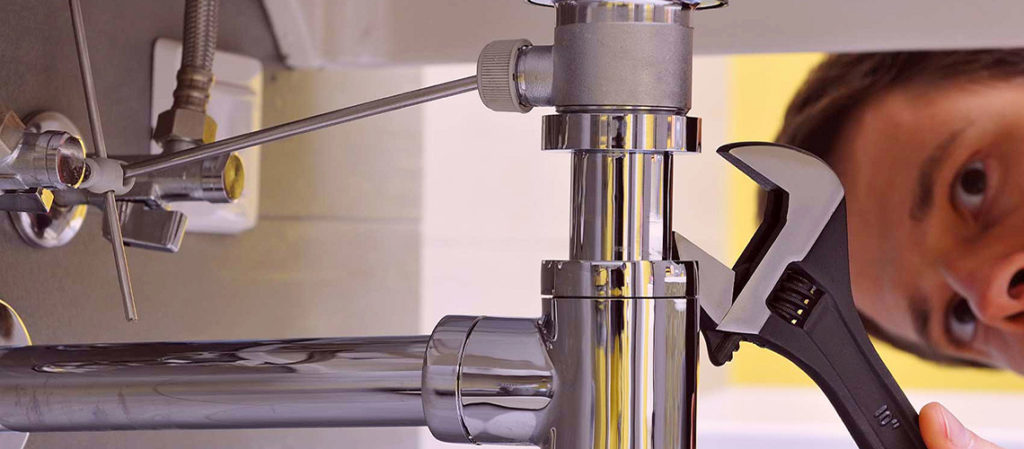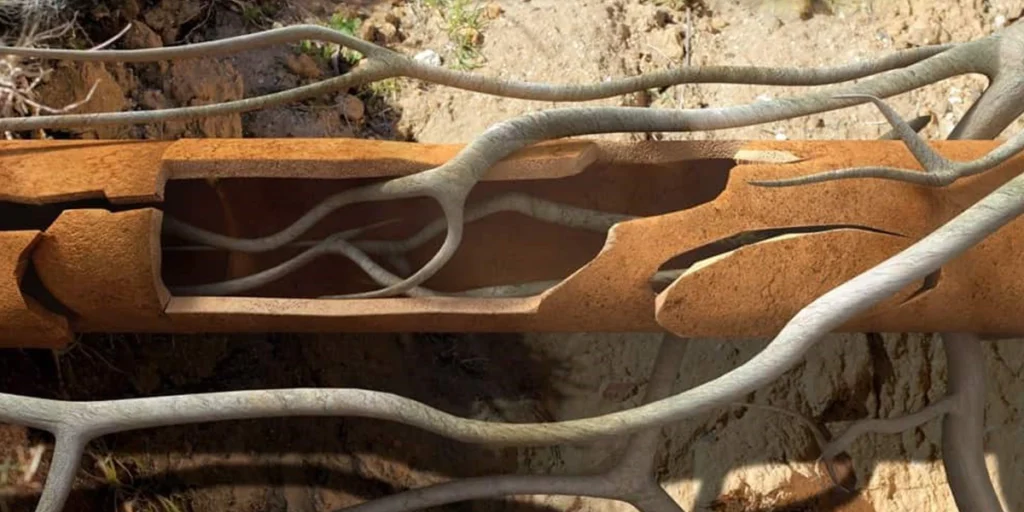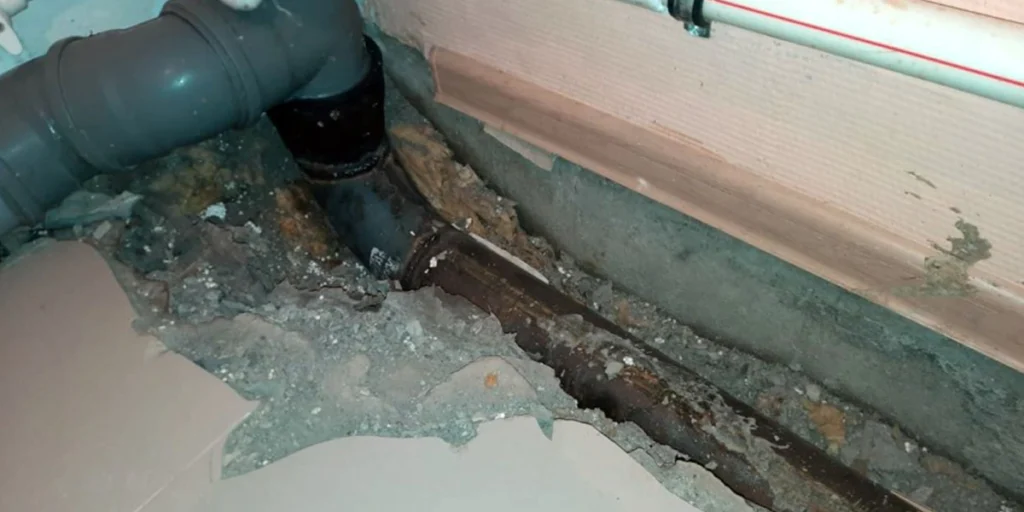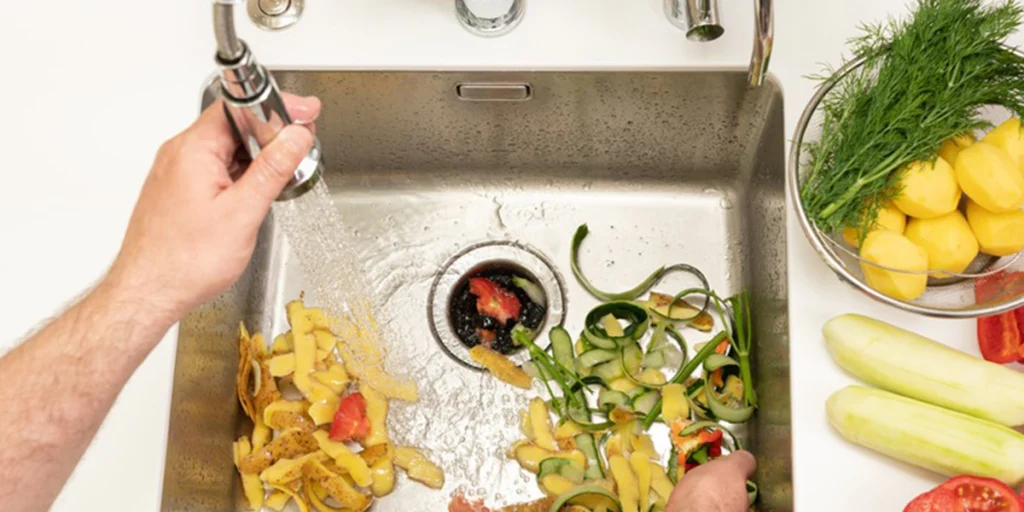Root intrusion is one of the most common causes of damage to sewer pipes. When tree roots find their way into underground pipes, they can cause blockages, leaks, and even full pipe collapses. This article will explore how roots in sewer pipes can wreak havoc on your plumbing system and what you can do to prevent and treat this problem.
Contents
How Do Roots Grow Into Sewer Pipes?
Tree roots naturally seek out sources of moisture and nutrients. Sewer lines, which carry water and organic material, provide an ideal environment for tree roots to thrive. If there is even the slightest crack or loose joint in the pipe, roots can begin growing into the sewer line. Over time, these roots can expand, causing the pipe to clog or even break apart entirely.
The Dangers of Roots Growing in Sewer Lines
Roots in sewer pipes can lead to a range of issues, from minor inconveniences to major plumbing emergencies. Here are some of the dangers associated with roots growing into sewer lines:
1. Blockages and Slow Drains
As roots grow in sewer lines, they can block the flow of water and waste. This may lead to slow-draining sinks, showers, and toilets. In some cases, the blockage can become so severe that it causes complete backups, preventing water from flowing through the system.
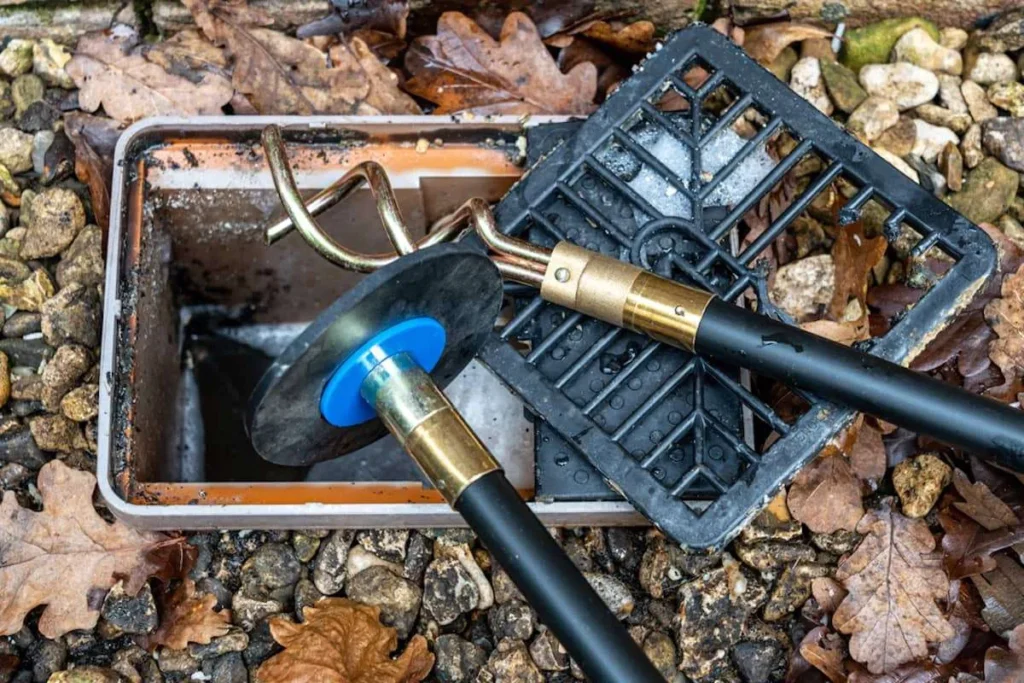
2. Pipe Breakage and Leaks
As the roots continue to grow, they can exert pressure on the pipe, eventually causing it to crack or break. Tree roots in sewer pipes can lead to leaks, which may cause extensive damage to your yard or even your home’s foundation if not addressed quickly.
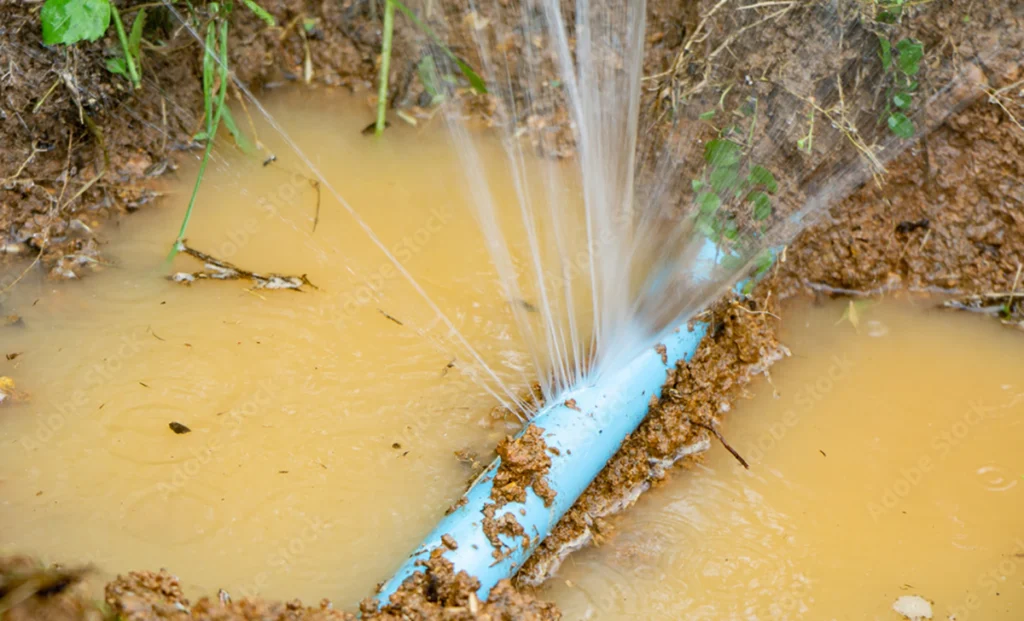
3. Flooding and Water Damage
A damaged or blocked sewer line can result in wastewater backing up into your home or yard. This can lead to flooding, water damage, and significant health risks due to the exposure to sewage.
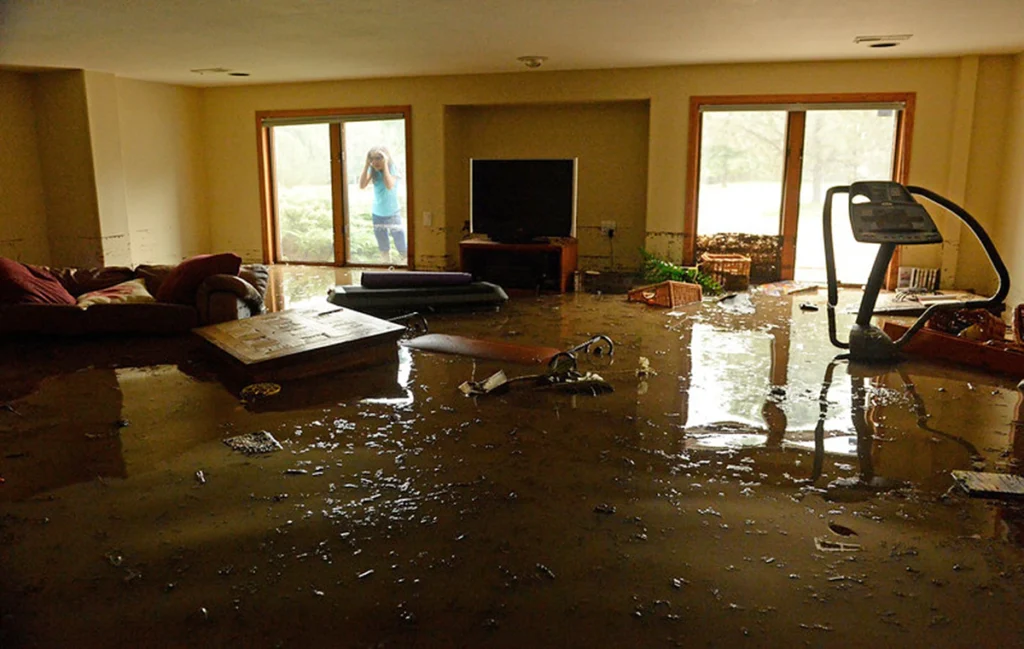
How to Stop Roots from Growing Into Pipes
Prevention is key when it comes to avoiding root intrusion in your sewer lines. Here are some effective ways to keep roots out of sewer lines and protect your plumbing system:
1. Regular Inspections
Having your sewer lines inspected regularly by a plumber can help detect any early signs of root intrusion. Early detection allows for less invasive treatments, such as clearing the roots before they cause significant damage.
2. Chemical Root Killers
One of the most common ways to stop roots from growing into pipes is the use of chemical root killers. These products are flushed down the drain and work by killing off any roots in the pipe while preventing new ones from growing.
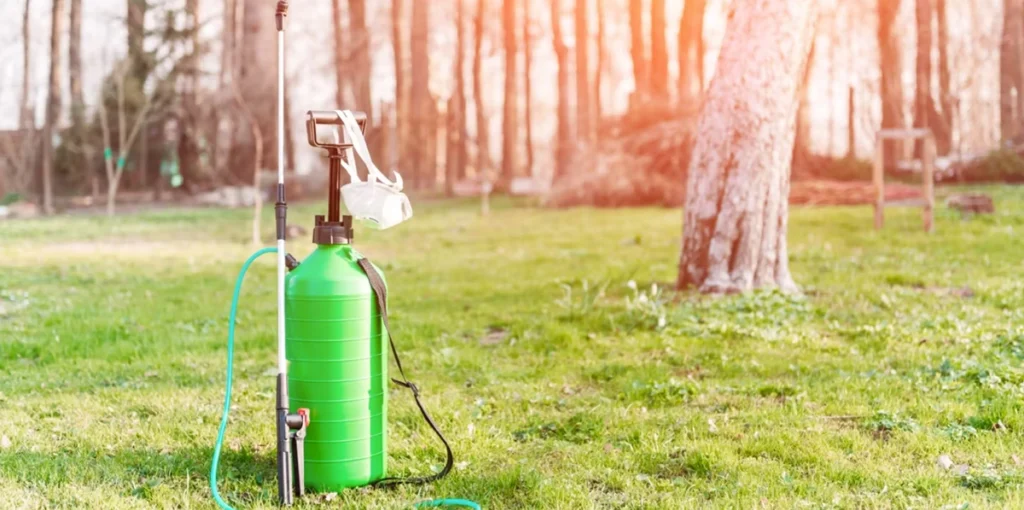
3. Root Barriers
If you have trees or plants near your sewer line, installing physical barriers can help redirect the roots away from the pipes. These barriers are typically placed between the tree and the sewer line to prevent roots growing in sewer lines.
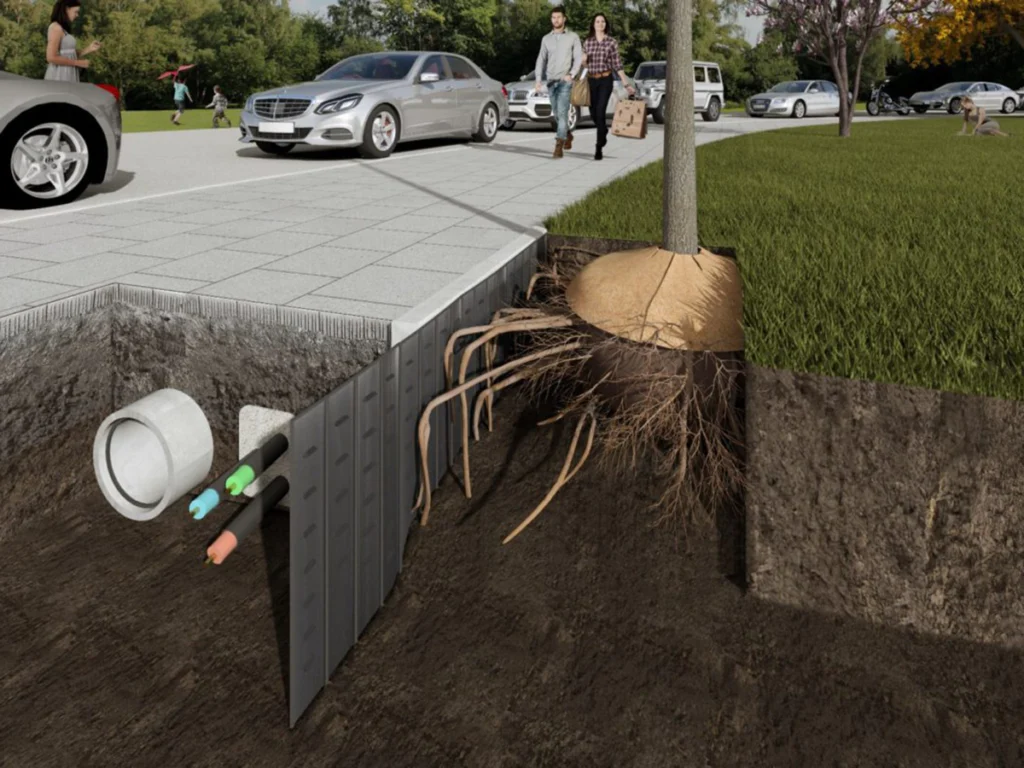
4. Tree Placement
Careful landscaping choices can help prevent sewer line tree roots from becoming a problem. When planting trees, make sure to place them far enough away from your drainage and sewer pipes so that their roots won’t reach the pipes as they grow.
How to Clear Roots in Sewer Lines
If you already have roots in your sewer pipes, taking immediate action is critical to prevent further damage. There are several ways to address this issue, depending on the severity of the intrusion:
1. Mechanical Root Removal
One of the most common methods for clearing roots in sewer lines is mechanical removal. A plumber will use a specialized tool, such as a rooter or auger, to cut through the roots and remove the blockage.
2. Hydro Jetting
Hydro jetting involves using high-pressure water to blast away tree roots and other debris from inside the pipe. This method is highly effective for clearing stubborn blockages caused by roots growing in sewer lines.
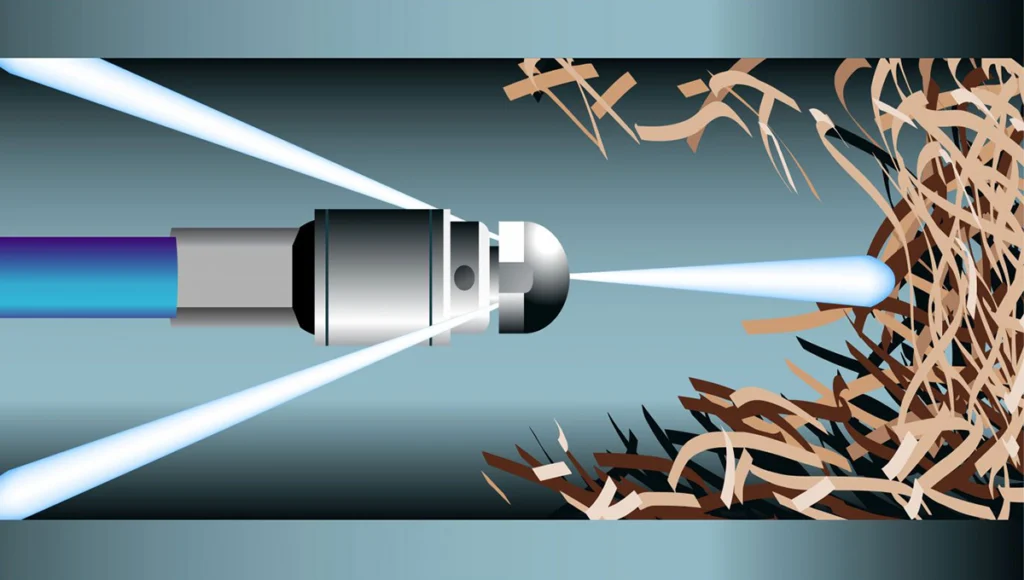
3. Pipe Relining
In some cases, if the pipe has been damaged by tree roots in sewer pipes, relining the pipe may be necessary. This process involves inserting a flexible tube coated with resin into the damaged pipe, which then hardens and creates a new pipe inside the old one. This method can prevent future root intrusion as well.
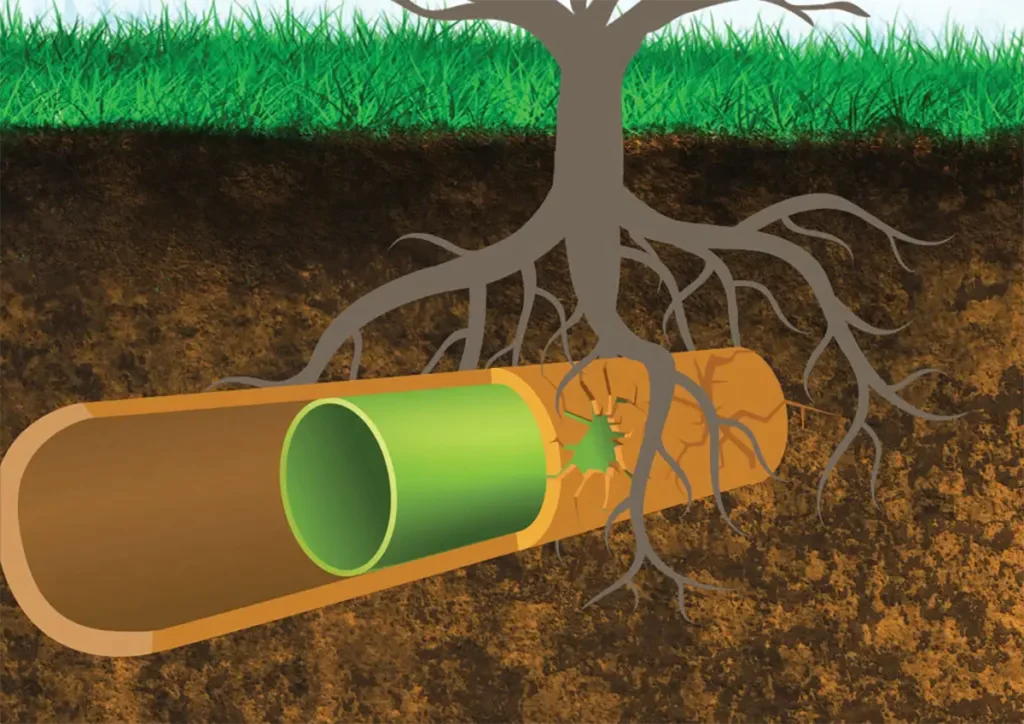
4. Pipe Replacement
If the damage is extensive, replacing the sewer line may be the best solution. This can be done through traditional excavation or trenchless methods, depending on the location and condition of the pipe. Replacing the pipe with modern materials can prevent roots in septic pipes from causing issues in the future.
How to Prevent Roots From Growing in Sewer Lines
Prevention is always the best approach when it comes to protecting your sewer pipes from root intrusion. Here are some additional tips to ensure your sewer system remains root-free:
- Keep Trees at a Safe Distance: Avoid planting trees directly above or near your sewer lines. Larger trees with aggressive root systems, such as willows and maples, should be kept even farther away.
- Install Sewer-Friendly Landscaping: Opt for plants and shrubs with shallow root systems that are less likely to grow into your sewer pipes.
- Schedule Regular Maintenance: Have your pipes professionally cleaned and inspected at least once a year to ensure any early signs of root intrusion are addressed before they become bigger problems.
Keep Roots Out of Sewer Lines: Final Thoughts
Roots in sewer pipes can cause extensive damage if left untreated, leading to blockages, leaks, and costly repairs. Taking steps to prevent roots from growing in sewer lines through regular inspections, root barriers, and chemical treatments can save you from expensive and disruptive plumbing issues. If you suspect roots in your pipes, act quickly by consulting a professional plumber for advice on the best solution, whether it’s clearing roots in sewer lines or replacing damaged sections.
By understanding how root intrusion occurs and implementing the right preventive measures, you can protect your sewer system and avoid the stress and expense of dealing with tree root damage.
FAQ
Roots in sewer pipes typically enter through small cracks or loose joints in the pipe. Tree roots are naturally drawn to moisture, and sewer lines provide an ideal environment for them to grow.
Common signs of roots growing in sewer lines include slow drains, frequent backups, unpleasant odors, and unusual wet patches in your yard. If you experience any of these issues, it’s important to get your sewer line inspected.
You can stop roots from growing into pipes by using chemical root killers, installing root barriers, or by having a plumber inspect your sewer line regularly. Proper tree placement is also key to preventing root intrusion.
Clearing roots in sewer lines can be done through mechanical methods such as root cutting, hydro jetting, or by using chemicals. In some cases, the damaged section of the pipe may need to be relined or replaced.
Yes, you can prevent roots from growing in sewer lines by keeping trees a safe distance from the pipes, installing root barriers, and scheduling regular maintenance to catch root intrusion early.
If you have roots in your pipes, contact a professional plumber immediately to inspect and remove the blockage. Acting quickly can help avoid further damage and costly repairs.



